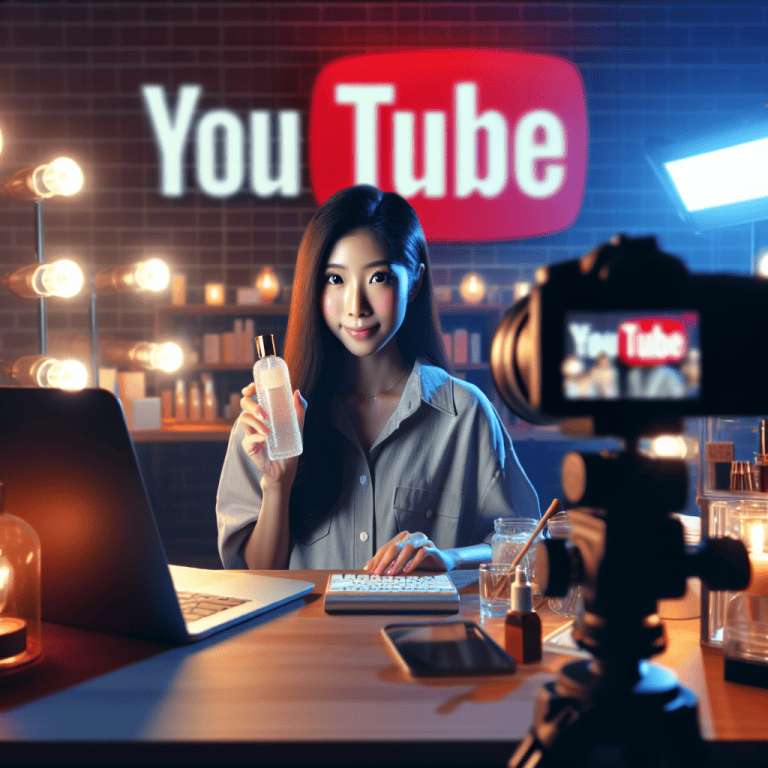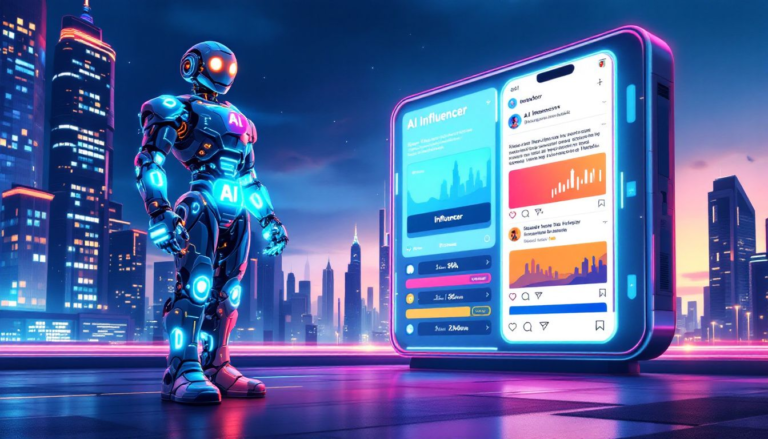4 Types of Influencers and What is Right For You
Influencers have become an integral part to a businesses marketing strategy. It’s become apparent that they help shape trends, drive consumer behavior, and bridge the gap between brands and their target audiences.
If you’re a social media enthusiast or an aspiring influencer yourself, understanding the different types of influencers can give you the edge you need to succeed at whatever level you choose to play. In this blog post, we’ll break down the various categories of influencers, their unique characteristics, and how each type can impact your social media strategy. Check out this blog post, if you would like to read an introduction to Influencer Marketing.
What Types of Influencers are there?
Before we dive into the specific types of influencers, it’s essential to understand what an influencer is. Simply put, an influencer is someone who has the power to affect the purchasing decisions of others due to their authority, knowledge, position, or relationship with their audience. Influencers typically have a dedicated following on social media platforms, where they share content that resonates with their audience.
Mega-Influencers (1M+ Followers)

Mega-influencers are the celebrities of the social media world. With over a million followers, these individuals wield immense influence and reach. They often collaborate with major brands, attend exclusive events, and have a significant presence both online and offline.
Characteristics of Mega-Influencers
Mega-influencers usually have a broad appeal and attract a diverse audience. Their content often spans various genres, including lifestyle, fashion, travel, and entertainment. Due to their vast reach, they can offer brands massive exposure and engagement.
Benefits of Working with Mega-Influencers
Collaborating with mega-influencers can provide brands with unparalleled visibility and credibility. Their endorsements can lead to increased brand awareness, higher conversion rates, and a boost in social media followers. However, partnerships with mega-influencers often come with a hefty price tag.
Examples of Mega-Influencers
Celebrities like Kylie Jenner, Cristiano Ronaldo, and Kim Kardashian fall into this category. Their social media posts can generate millions of likes and comments, making them valuable assets for any brand looking to make a significant impact.
Macro-Influencers (100K-1M Followers)
Macro-influencers are a step down from mega-influencers but still boast impressive follower counts ranging from 100,000 to 1 million. These influencers often have a more niche audience compared to mega-influencers.
Characteristics of Macro-Influencers
Macro-influencers tend to focus on specific areas such as fitness, beauty, technology, or travel. Their content is highly engaging and tailored to their audience’s interests. They are seen as experts in their respective fields, which makes their recommendations highly trusted.
Benefits of Working with Macro-Influencers
Brands can benefit from the targeted reach and high engagement rates that macro-influencers offer. Collaborating with macro-influencers can lead to effective brand positioning within a specific niche, resulting in more meaningful interactions with potential customers.
Examples of Macro-Influencers
Fitness enthusiasts like Kayla Itsines and beauty gurus like Huda Kattan are prime examples of macro-influencers. Their dedicated followers look to them for advice, product recommendations, and inspiration.
Micro-Influencers (10K-100K Followers)
Micro-influencers have a smaller but highly engaged following, typically ranging from 10,000 to 100,000 followers. These influencers are often considered more relatable and accessible than their larger counterparts.
Characteristics of Micro-Influencers
Micro-influencers usually have a strong presence in a specific community or niche. Their content is authentic and resonates deeply with their audience. They often engage with their followers regularly, building a sense of trust and loyalty.
Benefits of Working with Micro-Influencers
Brands working with micro-influencers can achieve higher engagement rates and more authentic connections with their target audience. Micro-influencers are also more cost-effective, making them an attractive option for small and medium-sized businesses.
Examples of Micro-Influencers
Food bloggers, fashion enthusiasts, and tech reviewers often fall into the micro-influencer category. They offer honest reviews and recommendations, making them trusted voices within their communities.
Nano-Influencers (1K-10K Followers)
Nano-influencers are the rising stars of the influencer world, with follower counts ranging from 1,000 to 10,000. Despite their smaller audience, nano-influencers have a highly engaged and loyal following.
Characteristics of Nano-Influencers
Nano-influencers are often everyday individuals who share their passions and hobbies with a close-knit community. Their content is personal, relatable, and highly authentic. They have the ability to foster strong relationships with their followers.
Benefits of Working with Nano-Influencers
Collaborating with nano-influencers can lead to genuine and impactful engagement. Their recommendations are often perceived as more trustworthy due to their close connection with their audience. Additionally, partnerships with nano-influencers are typically more affordable.
Examples of Nano-Influencers
Local foodies, hobbyists, and community leaders often fall into the nano-influencer category. Their influence may be limited in scope, but their impact within their niche is profound.
Celebrity Influencers vs. Social Media Influencers
It’s essential to distinguish between celebrity influencers and social media influencers, as each brings unique advantages and challenges to the table.
Celebrity Influencers
Celebrity influencers are individuals who have gained fame through traditional media outlets such as television, movies, or sports. Their influence extends beyond social media, making them household names. While they offer extensive reach, their endorsements can sometimes lack the authenticity that resonates with today’s consumers.
Social Media Influencers
Social media influencers, on the other hand, have built their following primarily through social media platforms. They are often seen as more relatable and accessible than celebrities. Their content is typically more niche-focused, allowing for deeper connections with their audience. Social media influencers can offer a more authentic and engaging endorsement for brands.
The Impact of Influencers on Brand Marketing
Influencers play a pivotal role in modern brand marketing strategies. Their ability to connect with audiences on a personal level makes them valuable assets for businesses looking to build brand awareness, drive engagement, and increase sales.
How to Choose the Right Influencer for Your Brand
Selecting the right influencer for your brand requires careful consideration of various factors, including your target audience, marketing goals, and budget. Here are some tips to help you make the right choice:
- Define Your Objectives: Clearly outline your marketing goals and what you hope to achieve through influencer partnerships.
- Understand Your Audience: Identify the influencers who resonate with your target audience and align with your brand values.
- Evaluate Engagement: Look beyond follower counts and assess the engagement rates and authenticity of potential influencers.
- Consider Relevance: Ensure the influencer’s content and niche align with your brand’s products or services.
Building Authentic Relationships with Influencers
Successful influencer marketing campaigns are built on trust and authenticity. Here are some tips to foster genuine relationships with influencers:
- Engage and Collaborate: Involve influencers in the creative process and seek their input to create authentic and engaging content.
- Offer Value: Provide influencers with exclusive experiences, products, or incentives to strengthen your partnership.
- Maintain Communication: Keep open lines of communication and nurture long-term relationships with influencers.
Measuring the Success of Influencer Campaigns
To gauge the effectiveness of your influencer marketing campaigns, track key metrics such as:
- Engagement Rates: Monitor likes, comments, shares, and overall interaction with influencer content.
- Conversion Rates: Assess the impact of influencer collaborations on website traffic, sales, and lead generation.
- Brand Sentiment: Analyze audience sentiment and feedback to understand how influencers are shaping perceptions of your brand.
Conclusion
Influencers have reshaped the way brands connect with their audiences. Whether you’re targeting mega-influencers for massive reach or nano-influencers for authentic engagement, understanding the different types of influencers and their unique strengths can elevate your social media strategy. By building meaningful relationships and measuring campaign success, you can harness the power of influencers to achieve your marketing goals.
Ready to take your influencer marketing to the next level? Explore our latest resources and tools to connect with the perfect influencers for your brand.






